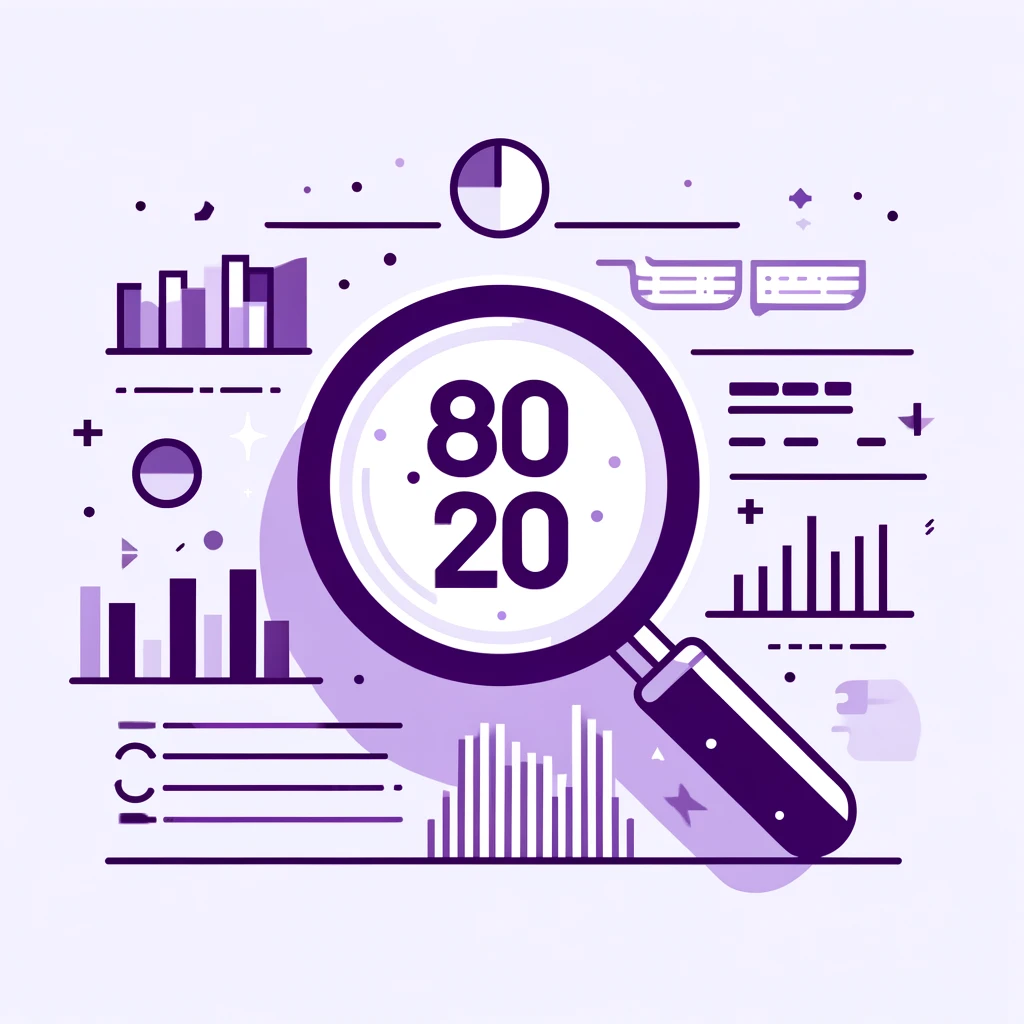How Data Driven Are You Really?

Success – What’s data got to do with it? The answer: a lot.
E-commerce businesses are giving more time and consideration than ever before to gathering customer data and analysing buyer behavior. Which is a great thing.
In fact, these days it’s hard to throw a rock without hitting a business that boasts being data-driven, data-centric or having data at the heart of everything they do. In reality, while many have indeed taken great strides in veering away from a gut instinct approach, the road to data-driven is far more involved than integrating a basic analytics solution.
That’s where your key performance indicators (KPIs) come in; helping you to not only optimise your marketing efforts and get products in front of potential customers, but also to create a well-oiled overall business with legs that won’t run you straight into the ground. Because while growing sales is good for the ego, growing cash flow is what puts food on the table. Naturally knowing what KPIs to look at, how to interpret and action them properly and at what point you should stop simply reacting to trends and start predicting them, is of the utmost importance.
So if you think that your data has already taken the wheel, maybe double check that it’s not just aimlessly cruising along. In this post, we’ll look at 6 questions every business should ask itself as it navigates the long and winding road of eCommerce.
- KPIs
Do you know what to track?
Unsurprisingly the first data that a company starts to track is usually that of its marketing campaigns. By the time you’ve graduated from simply monitoring engagement with your ads to calculating your customer’s lifetime value, you might think you’ve got your data down and impending success in the bag.
In reality – you may need to sit down for this – there is more to being data-driven than just tracking your marketing performance metrics. Afterall, there is a great deal that takes place after a customer clicks ‘Buy’. So without managing operational KPIs around how smoothly your payment experience is, how well stocked and in-date your products are, and how successful or unsuccessful their delivery is – you are not utilising your data to its full potential.
To become a top operator you must manage your fulfilment partners and monitor compliance with SLAs. Because if partners are consistently failing to deliver in a smooth and timely fashion, then having visibility of this will empower you to renegotiate fees or cut ties accordingly. Take Payment cancellations for example. When left unmanaged you might experience a high percentage of churn due to your customer’s sheer exasperation with their unsuccessful attempts to pay! In fact, in certain countries credit card providers may also block perfectly legitimate products that they perceive as potentially fraudulent. So you can betcha bottom dollar that this metric is extremely important to track when internationalising your business!
Keep your eyes on some of our recommended KPIs with our little cheatsheet. If you’re not tracking the below, then you have a long way to go:
- On-time delivery percentage
- Average delivery delay time
- Percentage of payment cancellations
- Stock coverage (broken down into 7 day and 14 day stock coverage)
- Age stock (Monitoring percentage of stock over 90, 60, 30 days)
- Gross margin LTV
- Revenue LTV
- Discount rates
- Refund rates
- Granularity
How deep can you go?
Unfortunately even with overviews of the “right” KPIs in place, you can still misinterpret your performance data! In fact, much like a Monet painting, an overview can look great from afar, but when you get up close and personal – it’s a bit of a mess. No offense to Monet.
You need to be able to dig beyond the surface layer to visualise your KPIs at various levels of granularity. Otherwise, you’ll have little chance of separating the valuable patterns from the wider tapestry. Meaning that you’ll miss out on the richer, more targeted insights you crave.
Say you’ve already identified a profitable cohort coming from a specific marketing campaign. Surely this is all you need to make data driven decisions about your marketing spend? Not quite. Try looking at that cohort’s repeat purchase rates broken down by first product purchased – suddenly you can see your strongest entry point products. Now you know to focus on pushing these as a more impactful way of introducing your brand to the public!
Next consider your fulfilment provider. You’ll undoubtedly have several, each with a Next Day and Same Day service. Naturally, if one carrier were to experience delays 30% of the time, it will drive up your average delay figures. Which means that if you only review a blended average KPI across carriers, then you might think performance is generally poor. Break that same performance down by individual carrier and suddenly you can spot the weakest link and say goodbye!
- Reactivity
How quickly can you react?
This one is pretty simple: in order to react to your data, you must be aware of your data.
It boils down to how frequently it’s being refreshed and utilised by your business. Because while many businesses have a weekly marketing meeting to review performance and make decisions – that sort of cadence is simply not enough to justify the title of Data Driven.
If a tree falls in a forest and no one is around to hear it, does it make a sound? How about if data falls into your lap and no one is listening? Can it make an impact? Probably not.
If you don’t have automated dashboards that at least update daily and trigger daily email reports on your activity – then you don’t have your finger on the pulse. After all, the only way to spot an unusual fluctuation in performance and react quickly, is to keep your eyes on the prize.
So treat your KPIs like a relationship. Check in daily and react to what they tell you instead of sitting back, getting complacent and still expecting it to all work out in the end.
- Tooling Biases
Are you aware of your tool’s weaknesses?
We don’t have to tell you that tools such as Google and Facebook analytics can be a great aid to the success of any e-commerce business. But as invaluable as their insights might seem, these tools are far far away from infallible. Fail to take their biases into account, and you’ll find yourself operating on incorrect assumptions that lead to an ineffective allocation of budget.
For example, while Google Analytics (GA) does give marketers the ability to quickly answer questions around campaign performance, it can also easily miss or even duplicate transactions and have the corresponding revenue double or triple counted in its reports. Not to mention that it cannot account for refused payments, order cancellations or returns. Oh dear.
Meanwhile Facebook’s self-serving agenda inflates the impact of its own platform by attributing view-through conversions in the previous 24 hours (all the eyes that simply scrolled past your ad but didn’t click) to itself and excluding full conversion path data. Meaning that its attribution model is an incredibly biased version of the truth at best.
This only serves to illustrate why it’s still so important to also track performance outside of the Google and Facebook analytics platforms. The truly data-driven approach would be to implement a platform to showcase all of your business performance data in one place, giving you a reliable, single source of truth…*cough* Conjura *cough.
Just saying.
- Automation
Are you using data for marketing automation?
Being data driven isn’t just about keeping on top of the here and the now, it’s also about automating steps where possible so that you don’t always need to be on top of the here and the now. In fact, by automating the intake of additional data streams, you can not only save time but also make tools like Google Analytics work harder for you!
Why not try feeding stock levels data into Google Merchant Centre and watch how suddenly, as if by magic, only products that you actually have in stock feature on your google ads. Automating this simple tweak immediately helps you to stop wasting money pushing products that you cannot actually deliver on.
Then, once you’ve got a handle on the here and the now, the next step is to start using your data to predict instead of just react to performance. With machine learning built into your analytics, you can not only predict the lifetime value of your customers but also automatically push that data into Google Ads and optimise your marketing activity to only pay a set amount for a customer based on how much you believe they will be worth.
Marketing automation will save you and your team time, money and brain cells, to focus on actioning your insights instead of just uncovering them.
- Actionability
Do you know how to use your data?
So you’ve got your head around the relevant KPIs, dug deeper to get a clearer picture of what’s going on, started monitoring your data like a hawk, begun accounting for inaccuracies in your tooling and now you’re making the most of your analytics with some automation. You’ve come a long way!
Now that you have all information about your business’ performance – use it. But it’s important to bare in mind that the data you track will serve you in different ways. Some readily available details in your customer’s journey such as acquisition channel, geography and product choice are paramount for spotting trends and generating insights. While others such as the number and duration of web sessions; breadth of search for products; use of the shopping cart and abandoned items, will be more statistically relevant for making predictions about customer behaviour!
Knowing the difference is the link between monitoring your data and putting it into action. So don’t sit back, relax and assume that just collecting data is enough to inform smart decisions and maximise growth potential. Instead focus on what the right KPIs are for what you are trying to accomplish and put yourself in the best position to gather the right data, unpick the right insights and make the right strategic decisions for your specific business and goals.




